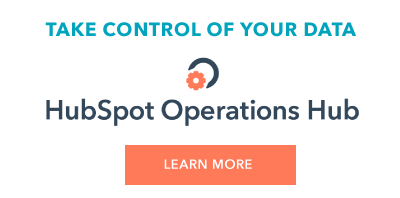Contact data is always changing — and that's because people are always changing. You'd be hard-pressed to find someone in your database who has the exact same job title, phone number, and email address as five years ago.
Each year, it's estimated that:
- 30% of people change jobs
- 43% of people's titles and/or job function change
- 37% of email addresses change
However, as people evolve and change, many data management strategies fall behind. The reality is that data is like fresh produce: it's not going to last forever, and it needs regular clean-ups to prevent a few bad apples from affecting the overall quality of your database.
In fact, Experian has found that the average organization suspects that 29% of current customer and prospect data is inaccurate in some way.
Data protection regulations also mean that clean data is more important than ever. The General Data Protection Regulation, or GDPR, includes the "right to be forgotten" for Europeans and places requirements on how long businesses should hold on to personal data.
A well-considered strategy for data purging, deletion, and archiving can help you put your organization in the best position to meet data protection regulations and keep your data clean and manageable. Let's explore what this looks like for organizations like yours.
Learn More About HubSpot's Operations Hub Software
What is Data Purging?
Data purging is the process of deleting data from a database. When you purge data, it is usually permanently erased and cannot be restored. This is a key practice for good data maintenance, as part of Data Lifecycle Management (DLM). It's also important for data protection regulations such as GDPR, which includes rights for data subjects to request that you delete their personal data.
How data deletion and data archiving are different
While data purging is permanent, data deletion can be a temporary measure. This depends on the method of deletion, such as deleting data from one app but leaving a backup elsewhere.
Data archiving means moving data instead of deleting it. This is a good solution for data that is no longer actively needed and can be moved to a separate storage device for long-term retention, such as for future reference or regulatory compliance reasons.
Data Purging for Data Protection
Keeping a clean database is a key part of adhering to data protection regulations. Here are some of the key data protection terms for your organization to keep in mind when deciding which data to delete, which you can explore in more detail on the ICO website.
- Right to erasure: Also known as 'the right to be forgotten', you erase personal data when requested.
- Lawful basis for processing: You only process data that is necessary for a specific purpose.
- Data minimization: You ensure that the personal data you process is relevant and limited to what is necessary.
- Storage limitation: You have a policy that includes your organization's standard retention periods, and purge or anonymize data after this time has passed.
- Purpose limitation: You are clear about what your purposes for processing data are and remove data
The Benefits of Purging Data
Deleting data is a key part of adhering to data protection regulations, but it's also vital for maintaining a healthy and accurate database.
Considering that 95% of organizations notice the impact of poor quality data in their work, data purging is a much-needed antidote to outdated and unruly databases.
By purging data you no longer need, you can:
- Focus on the data that matters most to your organization.
- Reduce the cost of cloud storage.
- Develop a more accurate view of your contacts and performance.
- Sync data you trust between your apps for enriched insights.
Choosing Which Data to Purge
Even if you understand the benefits of deleting data, it's not always easy to determine which data to erase. Like any well-intentioned decluttering, you might worry,"but what if I need this?" and instead do nothing.
However, any organization can start by deleting the data they definitely do not need, such as duplicates and inaccurate data.
When considering which data to delete, you can purge data that is:
- Inaccurate
- Incomplete
- Duplicated
- Outdated
- Unnecessary
Once you have identified purgeable data, you can automate the purging of low-quality data to ensure that your data purging strategy is executed on a regular basis. The personal data that you do keep should be managed safely and ethically as part of your cloud data storage strategy.
Take Your Next Steps to Cleaner Data
Data purging is just one part of an effective data management strategy. Start by understanding the data you need, for which purposes, and for how long. You can then purge the data you no longer require to improve the overall cleanliness and integrity of your database.
Originally published Oct 6, 2020 7:00:00 AM, updated June 24 2021

